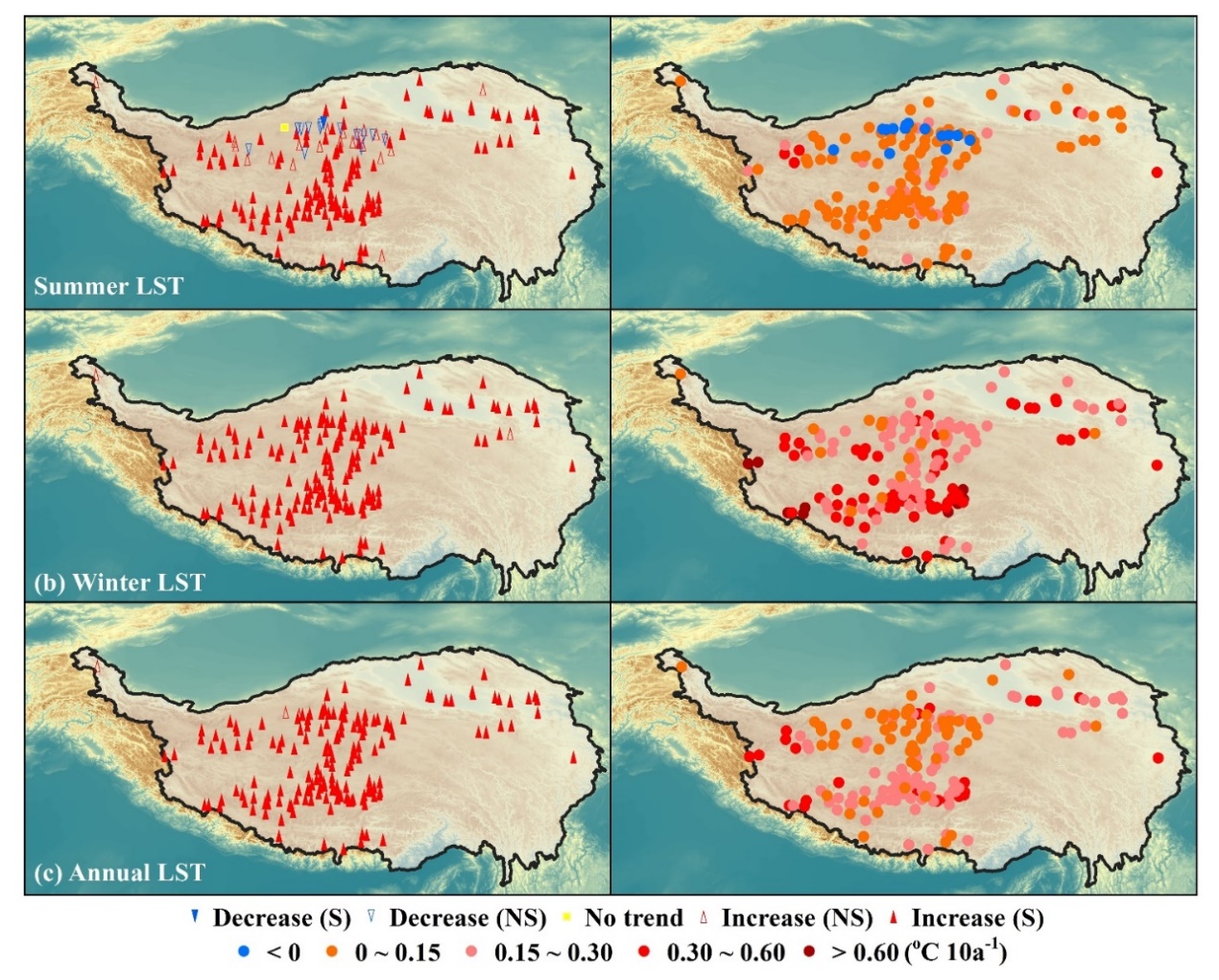Rising Daily Surface Temperature of 160 Lakes over Tibetan Plateau during 40 Years
The annual surface temperature of 160 lakes across the Tibetan Plateau has increased significantly in the period of 1978-2017, according to a study on large-scale dynamic monitoring and simulation of lake water temperature which is conducted by the remote sensing of water environment team from the International Research Center of Big Data for Sustainable Development Goals and the Aerospace Information Research Institute (AIR), Chinese Academy of Sciences (CAS).
The research team integrated remote sensing and numerical model to reconstruct the daily water surface temperature series of 160 lakes across the Tibetan Plateau from 1978 to 2017. The related paper "an integrated dataset of daily lake surface water temperature over the Tibetan Plateau" was published at Earth System Science Data.
Lake water temperature is an important variable in regional water and energy balance and is also a key parameter for lake aquatic ecosystems. However, due to the limitation of conventional ground observations, there is lack of data of lake water temperature on the Tibetan Plateau.
The team take advantage of both remote sensing and numerical simulation technology, developed a technical framework for reconstruction of lake surface water temperature series.
Aiming at the basic characteristics and data basis of lake water and heat balance in the Tibetan Plateau, the team improved a one-dimensional lake energy balance model. The model was calibrated and validated by lake surface temperature from MOD11A1 based on the Google Earth Engine (GEE) platform. Finally, the daily lake surface water temperature dataset of 160 lakes on the Tibetan Plateau during 1978-2017 was reconstructed.
Further validations show that the product is in good agreement with the ground-measured lake surface temperature.
Based on the reconstructed time series of lake surface water temperature, the study found that in the past 40 years (1978-2017), the surface water are significantly warming in most lakes on the Tibetan Plateau, with an increasing rate ranging from 0.01 to 0.47°C per decade, and the increase trend is more evident in winter than in summer.

Lakes in the southern part are generally found to have higher warming rates than those in the northern part of Tibetan Plateau. (Image by AIR)
This data product has wide coverage, long time span and high time resolution, which can provide technical and data support for understanding the response of the lake energy balance to climate change on the Tibetan Plateau.
In addition, the technical framework developed in this study has high universality and portability. In the future, the framework can be used for monitoring water-related ecosystems, revealing the impact of changes in lake water temperature on lake water quality and aquatic biota, and providing basic data and decision-making basis for the regulation of lake water quality and aquatic biota.
This research is supported by the Second Tibetan Plateau Scientific Expedition and Research Program and National Natural Science Foundation of China.
The data is available on the "National Tibetan Plateau Third Pole Environment Data Center" and the Zenodo platform..



News & Events